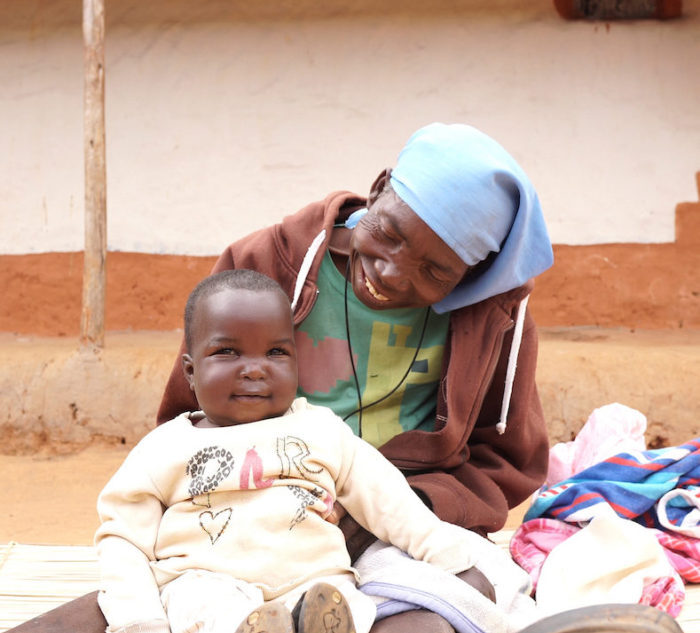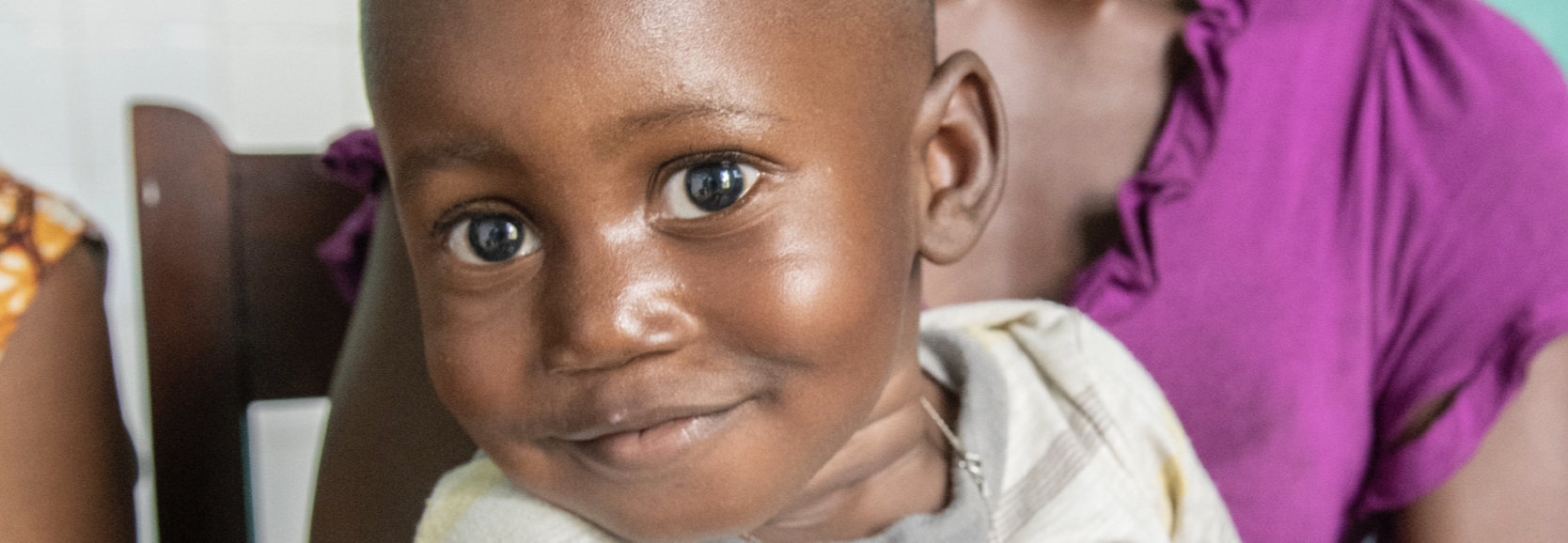The Tuberculosis Epidemic
Worldwide, tuberculosis (TB) continues to be one of the top 10 leading causes of death. Since 2007, TB has been the leading cause of death from a single infectious agent, ranking above HIV and AIDS. Globally, an estimated 10 million people fell ill with TB in 2019. Drug-resistant TB – a strain unresponsive to effective treatment options – continues to affect a large proportion of these individuals and is considered a major public health crisis. About 1.7 billion people, 23% of the world’s population, are estimated to have a latent TB infection and are at risk of developing active TB disease.*1
In 2019 alone, this ancient and thriving disease took the lives of nearly 1.4 million individuals, 16% of whom were children under the age of 15.1 Compared to adults, children infected with TB are more likely to become sick and die from the disease, and yet 53% of the estimated 1.2 million children who became sick with TB in 2019 were undiagnosed or unreported. *
TB and HIV
TB is the most common opportunistic infection in people of all ages living with HIV and HIV is a leading risk factor for contraction of TB. People living with HIV who are also infected with TB are more likely to develop active TB disease than those who are HIV-negative. TB is also the leading cause of death among people with HIV, accounting for 208,000 people who died from HIV-associated TB in 2019 and about a third of AIDS deaths. The risk of primary multi-drug resistance tuberculosis is two times higher in HIV-infected populations compared to those who are HIV-negative (this form of TB is more difficult to cure). The impact of HIV/TB co-infection can be more dramatic in children, as co-infected children have higher rates of mortality than those with TB infection alone.
While prevention and treatment of HIV and TB in children and adults share common challenges, children are more difficult to diagnose with TB and HIV than adults, child-friendly medicines are not made widely available, and older children and adolescents are often poorly served by adult service delivery models. Antiretroviral treatment (ART) significantly reduces the risk of TB in HIV-positive individuals of all ages, but a significant proportion of those living with HIV are not on treatment – this treatment gap is further pronounced in children and adolescents.
While much progress has been made in the fight against HIV and AIDS, TB-HIV co-infection jeopardizes that progress, especially among children. However, through a well-designed, esourced, and coordinated response, we can build progress toward eliminating these epidemics resourced, and coordinated response, we can build progress toward eliminating these epidemics.
The Elizabeth Glaser Pediatric AIDS Foundation Working toward Progress in Childhood TB Prevention, Diagnosis, and Treatment
Integrating Pediatric TB Care in Non-TB Entry Points:
There are many missed opportunities to identify, prevent, and treat TB in children and adults, in part, because disease programs and services are often siloed and unaffiliated with existing health services. Integrating TB in non-TB entry points such as maternal and child health (MCH), nutrition, outpatient/inpatient departments (OPD/IPD), and HIV and AIDS services, can offer an increased expansion of TB prevention, diagnosis, and treatment, as well as new opportunities to diagnose people living with HIV, while also providing comprehensive health care to children, women, and families.
The Elizabeth Glaser Pediatric AIDS Foundation seeks to end global pediatric HIV and AIDS through prevention and treatment programs, research, and advocacy. Due to the overlapping epidemiology of TB and HIV, and the mutual benefits of a coordinated response, EGPAF has scaled-up adult and childhood TB identification, prevention, diagnosis, and treatment through integrating TB into many of our existing supported maternal and child wellness and HIV services. We also work with community health volunteers across our programs to provide TB education and to identify harder-to-reach TB cases within communities and households.
Ensuring Universal Access to TB Identification and Linkage to Care through Capacity Building:
For years, EGPAF has worked alongside policymakers, partners, and within clinic settings to transfer policy into practice. We have recruited clinical and community health worker staff and trained clinicians, nurses, laboratory personnel, and community health workers on how to identify TB in adults and children, collect sputum for diagnosis, and link a TB-suspected or TB-infected individual to prevention and treatment services. We have created and harmonized child-adapted symptoms-based screening tools to better enable health workers in supported settings to identify children with presumptive TB in routine clinic visits. Our capacity-building efforts have resulted in several sites with more highly trained and supported staff that function as training facilities for health workers in other settings (referred to as Centers of Excellence), thereby allowing trained clinicians to scale up similar models of effective care in their settings. We have also supported national TB programs on the improvement of tools and systems for the collection of TB data, aiding in building well-informed and sustainable national programs to eliminate TB. We have also developed costing tools to allow governments to adequately budget for pediatric TB in their Global Fund submissions. These tools were integrated into the World Health Organization costing toolkit and adapted by the TB Caucus to be used in Latin America
Implementation of Innovative Solutions to Decentralize Childhood TB Diagnosis and Treatment:
Until recently, the ability to treat TB with medicines appropriate and tolerable to children did not exist. However, we now have child-friendly, palatable, dispersible, effective, and affordable first-line treatment options available in fixed-doses (creating greater ease of use, while reducing the risk of drug resistance). These new formulations can be used in children to provide treatment for active TB disease as well as TB preventive treatment to avoid TB infection from developing into active disease. Although we still do not have an ideal diagnostic test for childhood TB, we have access to molecular diagnostic technologies characterized by high sensitivity that can help to diagnose TB in children.¹ However, accessibility to these innovations for children varies by country. In fact, major challenges remain to ensure effective access to laboratory-based diagnosis for children in locations facing the greatest needs. These challenges are primarily represented by poor capacity at the facility level to collect samples for pediatric TB diagnosis, and weaknesses in the sample transportation networks to ensure samples reach laboratories or testing sites promptly.
With funding from Unitaid, EGPAF is implementing the Catalyzing Pediatric TB Innovations (CaP TB) project in nine African countries and India. From 2017 to 2021, CaP TB allows EGPAF to train, procure, and implement the latest diagnostic technology and drug formulations for children. Through this award, EGPAF will continue to build sustainable models.
Enhancing TB Programs through Evaluation and Research:
EGPAF works within supported settings to enhance the sustainability of effective practices, ensuring many more children and adults with latent TB, presumptive TB, or active TB are getting the care they need. Through CaP TB, EGPAF is prioritizing documentation of best practices and will implement two research studies: one will evaluate the impact of integrating TB services into child health, non-TB services like MCH, HIV, Nutrition, OPD/IPD on improved identification of TB among children under 5 years old and subsequent linkage to care. The other study will focus on community-based contact investigation of children aged 0-14 years who are household contacts of TB index patients and community-based initiation of preventative therapy for children identified as eligible. Our findings will be used to inform global best practices in pediatric TB case finding, diagnosis, treatment, and prevention.
Improving Advocacy for TB through Civil Society Organizations:
From the advocacy perspective, EGPAF is contributing to strengthening civil society organizations’ (CSOs) capacity to advocate for childhood TB at national and local levels. For this purpose, EGPAF developed a project aiming to provide small grants to CSOs to facilitate community-led advocacy and demand creation for national TB policy reforms for the implementation and scale-up of pediatric TB care, including screening, diagnostic, adherence support, treatment of active TB, and TB preventive therapy. So far, grants for seven CSOs have been approved in six countries (Cameroon, Democratic Republic of Congo, Malawi, Tanzania, Uganda, and Zimbabwe). One more project (in India) is still under discussion and pending approval. These small grants are made available through the CaP TB project to help create an enabling policy and regulatory environment to support the work of the CaP TB project and improve pediatric TB management as a whole.





